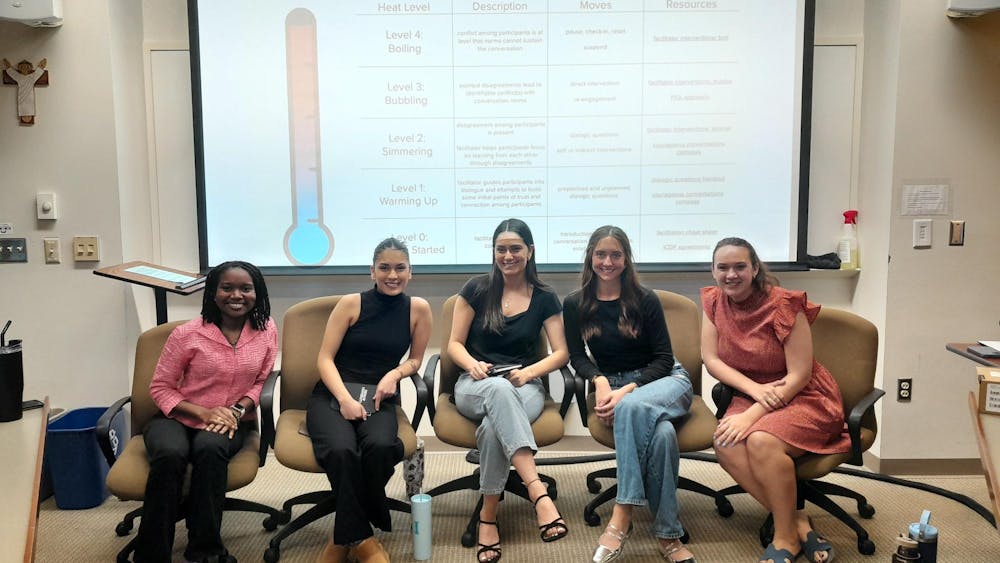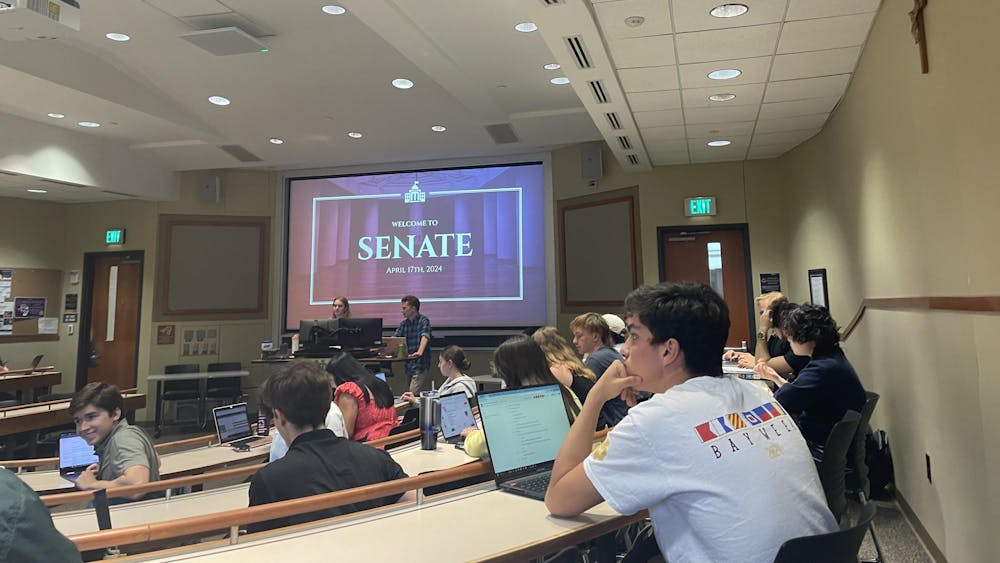Senior Ethan Ferguson, a biochemistry major, and a team sponsored by the Dow-Corning Company have developed a more precise mass spectrometry method for the diagnosis of porphyrias, helping streamline sample times and ultimately help in the medical and industrial fields.
Ferguson said porphyrias is a group of rare diseases characterized by the overproduction and accumulation of porphyrins, or chemical precursors to the creation of heme molecules, in the biosynthetic pathway, causing neurological or skin problems. Porphyrias are uncommon, but occur occasionally due to pesticide in soil and food, he said.

"Heme is an important molecule in the production of hemoglobin and is responsible for catalyzing redox reactions. It's essential for life," he said. "When precursors build up, they cause problems in its production."
The team's new method cut down sample time, which helped determine the toxicology of compounds used in silicone product studies by the Dow-Corning Company much faster than the traditional method.
"The existing method used High Performance Liquid Chromatography (HPLC) to separate compounds, which took hours and was not very accurate. The flagship of our technique was using mass spectrometry to detect the molecules by looking at liver tissue, blood and feces samples," Ferguson said. "Basically it operates at higher pressures to cut down on sample time."
The technique would be applicable in medical and industrial studies, he said. The rapid detection system could be easily modified to identify other classes of molecules to diagnose other diseases.
"It's an important test and an easy one where physicians can send off a blood or urine sample to rule out porphyrias as options," Ferguson said, "or in an industry setting it would let the researchers know whether the drug compound or cosmetic product they're developing interacts with the heme biosynthetic pathway."
Ferguson said the group was waiting for approval from the legal department at Dow-Corning before it published the research.

"The manuscript is finished and ready to submit at any time," he said. "We're looking to see if patenting is a possibility, but once it's in literature, it will probably be fair game."
Other industries and physician groups will adopt the study and use it well after he graduates, he said. Ferguson said the research provided valuable experience since he plans to attend medical school next year.
"It's really a rewarding thing for everyone involved," he said.
Ferguson said his advice to undergraduates is to be aggressive when looking for research opportunities and to start early. He said he began the summer after his sophomore year researching in a group led by Department of Chemistry and Biochemistry Professor Jennifer DuBois.
"Professors and undergrad advisors can be really helpful, but they're busy and sometimes it's not the first thing on their mind. Especially for science majors, you have to show you want to do it," he said. "Like a good Notre Dame student, use your resources."












